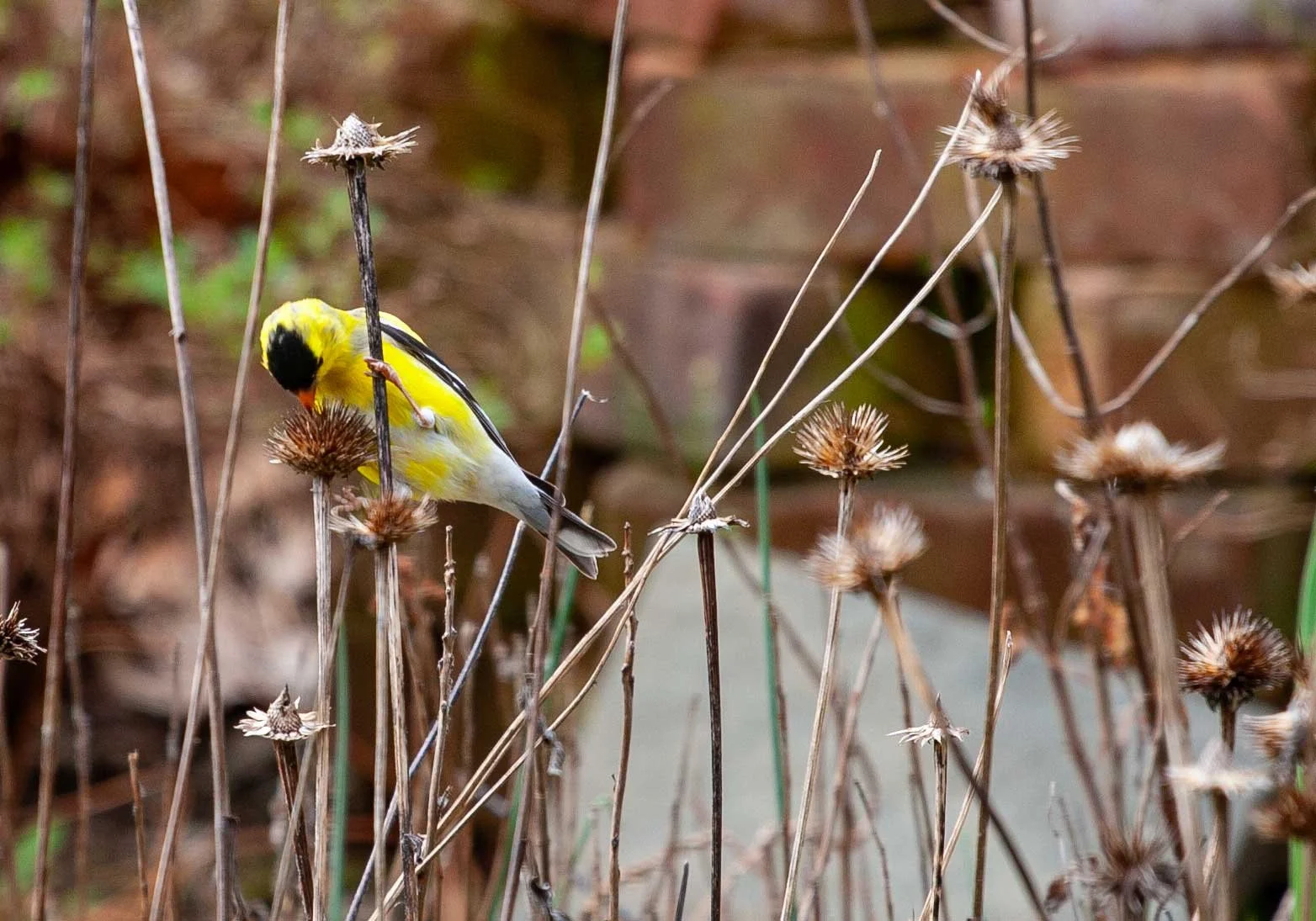Leave the Seedheads
Goldfinch eating seeds from Echinacea purpurea seed head left up through the winter. Photo taken on April 20, 2024. ©2024 Elana Goren.
Though I have removed last year’s Aster seed stalks that have flopped over and lay on the ground, I have resisted cutting down last year’s Coneflower stalks (Echinacea purpurea) for a couple of reasons. The first reason is that, as you can see in the photo above, birds are still relying on last year’s seeds for nourishment as they prepare to nest, lay eggs, start raising their young. There aren’t that many seeds left, as the birds have been eating them over the winter, but there are birds, especially goldfinches, that will seek out remaining seeds during the lean, early spring months.
The second reason to leave the stalks is that some species of overwintering bees use perennial stalks to house their offspring over the cold winter months and not all bees have emerged from their winter homes in April. Bees will be emerging over the next month or so and we need to help them survive if we we are going to reverse the disastrous trend of declining bee populations. Remember, no bees, no food. We need bees and other pollinators to thrive if we, ourselves, are to thrive. So, please try to resist cutting down native perennial stalks, or at least lay them on the ground in the same bed, so that the stalks can nurture the soil and any bees residing in them can emerge unharmed when they are ready. As the new plant growth rises, the stalks on the ground will be hidden from view and will create a mulch-type layer that protects the soil as it nourishes it.
